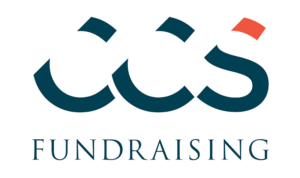Sell your belongings and give alms. Provide money bags for yourselves that do not wear out, an inexhaustible treasure in heaven that no thief can reach nor moth destroy. Luke 12:33
“The greatest level, above which there is no greater, is to support a fellow Jew by endowing him with a gift or loan, or entering into a partnership with him, or finding employment for him, in order to strengthen his hand so that he will not need to be dependent upon others.” As stated by Rabbi Maimonides as the highest degree of tzedakah.
A house of worship can play a vital role in helping their congregations understand the value of a strong gift planning culture for the benefit of the individual and to sustain the congregations’ good work.
The Synagogue and the Church have been faithfully serving their congregants for thousands of years. Giving offerings, acts of mitzvah, tithing, and tzedakah are all terms used to describe sacrifice, justice, and serving others in need.
A healthy congregation is strong in faith, service, and giving. Acts of kindness and supporting your fellow man stem from a shared value of generosity that leads to a deeper understanding of our relationship to God and others. We encourage people of faith and their religious communities to discover how to maximize their giving opportunities.
A legacy gift is a fundamental act of faith, driven by a belief in the future of your shared faith. Whether teaching your children about the importance of giving or ensuring the future of your house of worship, that is l’dor v’dor, or the values that we pass from generation to generation.
What is gift planning culture?
Gift planning culture is a house of worship’s commitment to donor-centric fundraising with an expanded focus on noncash assets. Simply put – no matter the size of your institution’s administration office, you can increase the funds for operations and services by adding planned gifts to your fundraising toolkit.
There are numerous ways to begin the journey to building a gift-planning culture.
Begin with Bequests
Americans donated $485 billion to charities in 2021. $136 billion went to religious organizations, which was the top of ten giving categories defined by Giving USA, which tracks such data. Bequests are easy to draft and execute. They are the most straightforward vehicle in the planned giving toolbox and will increase your revenue.
It’s important to know that the average age of your congregant making their will is 44, and by 53, they have begun to add a charitable beneficiary.
Bequests are not exclusive tools to engage with your older congregants. Engagement can begin now.
Form a Planned Giving Committee
Pull from your lay leaders to determine how your house of worship will promote, manage, and steward gifts of noncash assets. By comprising this committee of leaders who are likely to give, you are ensuring donor-centric thinking and buy-in from your best planned giving prospects, themselves! Volunteer leaders give credibility to your objectives and actively engage their peers.
Assessment: A good understanding of your community’s dynamics
An assessment is crucial in the planning success. By conducting a data analysis, you can uncover how many congregants consistently give and how much they give at any given time of the year, along with other important data points such as volunteer involvement, marital status, and a wealth screening to gain insight into potential long-term giving.
Partnering with a firm, such as CCS, can make this process beneficial in ensuring you have the correct information and understand how to move forward with the information you learn.
Establish an Endowment Fund
Depending on the size of the house of worship, it may be prudent to establish an endowment fund if you haven’t already done so. An endowment can benefit greatly from legacy gifts, such as bequests, where the funds are realized over time and can grow as a sustainable source of operational and/or programmatic income.
Endowments also create flexibility in future allocations in emergencies, such as future pandemics and natural disasters.
Promote
Once you have a committee and have established an endowment fund that focuses on where the money will go, it’s essential to promote the new program. Announcements from the pulpit or bimah, bulletin or order of worship, and social media can galvanize support. Designate a month of gift planning activities, including educational series and seminars.
Key considerations
To ensure your gift planning culture is sustainable and long-lasting, consider these specific areas that will help you and the congregation succeed. Here are some helpful suggestions:
- Does my institution have the capacity to conduct an assessment of our records?
- How much time do I have to work on this?
- Is my congregation preparing to embark on a strategic plan? Could an assessment help with that strategic plan?
Creating a gift planning culture will ultimately help your house of worship raise more funds and bring the healing power of faith to more members of your community. Though this work is not easy, do not be discouraged; the path forward will lead to assisting others far beyond imagination.
“Great is tzedakah, for since the day that the world was created until this day the world stands upon tzedakah” – Midrash Tanna d’Vei Eliyahu Zutta 1
Let not your hearts be troubled. Believe in God; believe also in me. John 14:1
